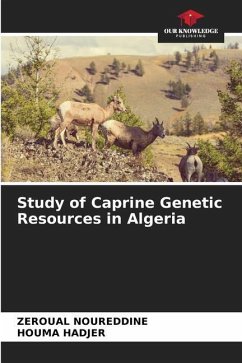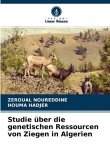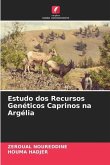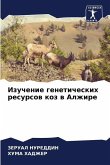Our study focuses on goat genetic resources in Algeria. The latter are characterized by a great genetic diversity and their characterization on the phenotypic level remains very timid. The goat in Algeria is composed mainly of local populations Arbia, Kabyle, makatia and M'zab of imported breeds and crossbred population. It is managed according to an extensive system. Geographically, it is essentially concentrated in the steppe region. Three methods of characterization of goat breeds have been identified: the phenotypic method, the biochemical method and the cytogenetic method. However, most of the work carried out in Algeria on the characterization of the goat population has adopted the phenotypic method because of its low cost. Not benefiting from any conservation program, the local populations are threatened by a real genetic pollution. Thus, in order to preserve our populations which play a primordial role in the sustainability of our farms, it is necessary to launch a program of management, conservation and valorization of these goat populations.







